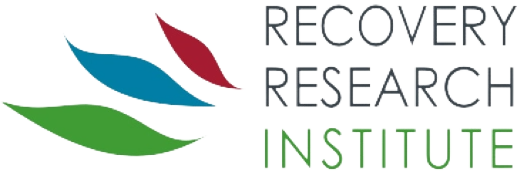Recent Increases in Medical Staff in Addiction Treatment (2007-2010)
The recent vision for substance use disorder (SUD) treatment has shifted towards an integrated approach.
In order for this framework to succeed,substance use disorder (SUD) treatment facilities may have a greater need for medical professionals such as psychiatrists and physicians who can prescribe medications to treat the SUD as well as other medications to treat any co-occurring conditions
WHAT PROBLEM DOES THIS STUDY ADDRESS?
Since the literature on medical staff utilization in the substance use disorder (SUD) treatment setting is limited, this study provides information on the employment of medical personnel in this setting and organizational factors that may influence medical staff utilization.
HOW WAS THIS STUDY CONDUCTED?
This study used data from the National Treatment Center Study (NTCS) which is a longitudinal study of treatment organizations that receive a majority of payments from a fee-for-service model. To evaluate changes over time, this study used data from 274 treatment centers that participated in the survey in both 2007-2008 and 2009-2010. Measures of interest included medical staff hours per week, provision of medications for substance use disorder (SUD), and changes in the number of employees over time.
WHAT DID THIS STUDY FIND?
NOTABLY FROM THE STUDY:
- Average medical staff utilization increased by 26% from 2007 to 2010
- A majority of organizations (65%) reported an increase in medical staff hours per week over time
- Of the 51 organizations (19%) that did not have medical personnel on staff in 2007, 21 reported use of medical staff by 2010
- Referrals to these organizations from health care providers (e.g., emergency departments and hospitals) increased by 20% from 2007 to 2010
- The number of centers providing medications for SUD remained constant over time at 60%
Factors related to increased medical staffing included:
- obtaining more referrals from health care providers
- use of case managers for coordinated care
- provision of medications for substance use disorder (SUD)
- hospital affiliation
While results are not directly related to recovery, an increase in medical staff utilization over time is an indicator of a shift toward an integrated, recovery oriented system of care that likely offers both pharmacological and psychosocial interventions for substance use disorder (SUD). While it is unknown if increasing medical staff improves substance use outcomes, treatment centers at least may have a greater ability to address the medical and psychosocial needs of their patients.
Although SSRIs may be a commonly prescribed medication, this study adds to the body of literature suggesting:
a) they are not effective in helping reduce alcohol consumption among individuals with alcohol use disorder (AUD)
b) they may not be effective in reducing depressive symptoms for this group of patients either.
WHY IS THIS STUDY IMPORTANT?
Integrating addiction treatment with primary care and other essential services (i.e., mental health care, HIV screening, legal/financial services) presents an ideal framework. Rather than an adjunct to overall care, substance use disorder (SUD) treatment in combination with these other services would increase the ability of providers to identify patients with SUDs and efficiently link them to the necessary care.
It is the hope that evolving towards this holistic model will result in better overall health for the patient. Understanding the current landscape of SUD treatment and medical staff utilization is an important step for realizing this goal.
Increasing the involvement of medical staff in treatment centers is aligned with the disease model of addiction.
As a chronic, relapsing disease, substance use problems and addictions require management over time and patients may benefit from having increased access to medical professionals. Additionally, since the presence of health problems may increase relapse risk, adequately treating them can improve wellbeing and help patients better sustain recovery.
- LIMITATIONS
-
- All data were collected from treatment center administrative and clinical directors through interviews and sometimes these responses can be inaccurate.
- While this study shows trends in medical staff utilization, there may be uncollected variables such as patient-level factors (e.g., substance use outcomes) that could provide more information on this topic. For example, it is not known how changes in medical staff utilization actually impact patient care.
NEXT STEPS
More research is needed to determine if increasing medical staff results in improved substance use outcomes for patients. Since having physicians on staff can be expensive for treatment centers, it is important to determine if other clinicians, such as nurses or physician assistants, can effectively perform the same tasks.
BOTTOM LINE
- For individuals & families seeking recovery: Medical professionals are an important part of addiction treatment. As suggested by the current study, there is a greater likelihood of finding a program with a medical professional on staff if the program is hospital affiliated.
- For scientists: Research is needed to determine if increasing medical staff results in improved outcomes for patients.
- For policy makers: If research shows a benefit for medical staff utilization in addiction, consider allocating more funding so that public programs can hire more medical professionals.
- For treatment professionals and treatment systems: As a chronic condition, addiction requires ongoing care and may benefit from the addition of medical professionals at treatment centers.
CITATIONS
Fields, D., & Roman, P. (2015). Longitudinal examination of medical staff utilization in substance use disorder treatment organizations. J Subst Abuse Treat. doi:10.1016/j.jsat.2015.06.014

